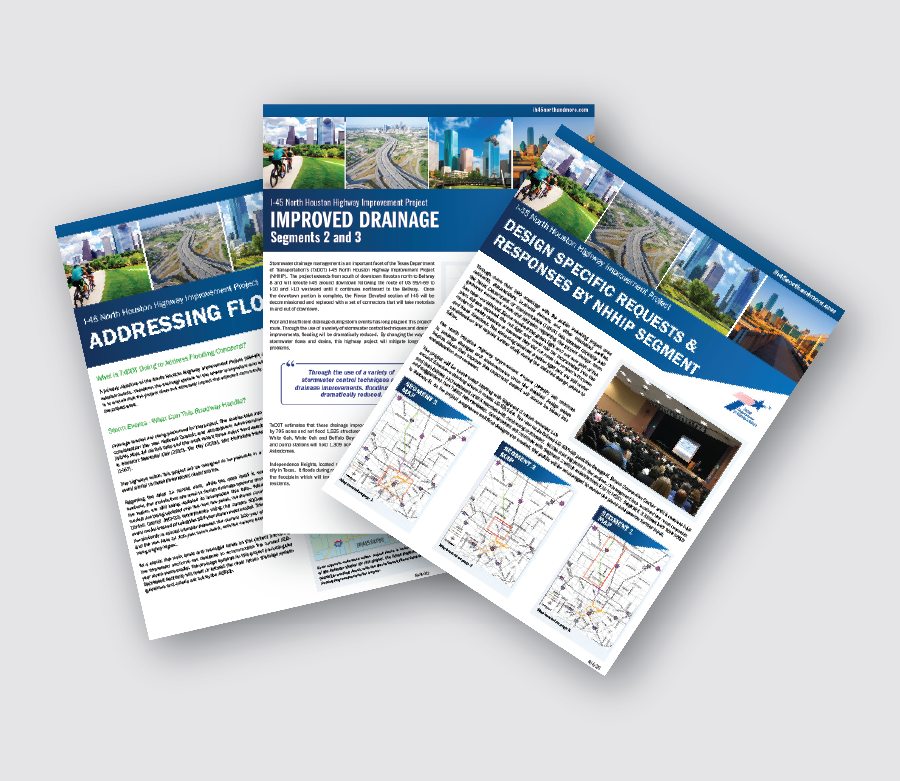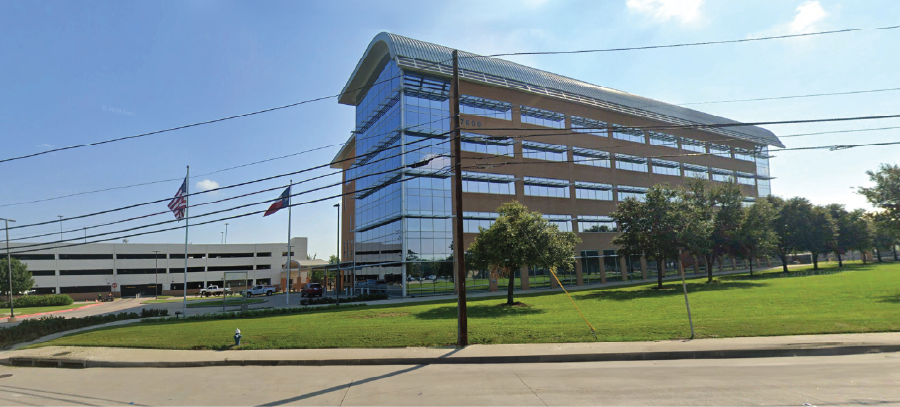About the NHHIP
Project background
The Preferred Alternative for the North Houston Highway Improvement Project (NHHIP) is designed to enhance safety, create additional roadway capacity to manage congestion, incentivize transit and promote ridesharing, and improve mobility and operational efficiency on I‑45 from U.S. Highway 59/I‑69 to Beltway 8 North, including improvements along US 59/I‑69 between I‑45 and Spur 527 in Harris County, Texas. The project is divided into three segments: Segment 1 is Beltway 8 North to I-610; Segment 2 is I-610 to I-10; and Segment 3 is the Downtown Loop System: I-45, I-10, and US 59/I-69. The NHHIP includes:
- Addition of four non-tolled managed lanes, two lanes in each direction, 24/7 operations for carpool and transit on I-45 from Beltway 8 North to downtown Houston with improvements continuing south along US 59/I-69 to Spur 527.
- Reconstruction of mainlanes and frontage roads.
- Rerouting of I-45 in the downtown area to be parallel with I-10 on the north side of downtown and parallel with US 59/I-69 on the east side of downtown.
- Access to the west side of downtown via downtown connectors which would provide access to and from various downtown streets.
- Both I-10 and US 59/I-69 within the proposed project area would be realigned to eliminate the current roadway curvature.
- Addition of four I-10 express lanes between I-45 and US 59/I-69.
- Reconstruction of the interchange at I-45 and I-610N to improve sight distances on direct connectors and replace outdated left lane exits where drivers expect right lane exits.
- Connection of I-45 and I-610 frontage roads with new intersections in Segment 2 and add one frontage road lane in each direction in Segment 1.
- Addition of shoulders that are full width.
- Addition of bike/pedestrian features along frontage roads and affected cross streets.
- Addition of trails parallel to bayous within the right of way.
Project segments
Frequently Asked Questions
Project information
Flooding concerns
Air quality
Bike and pedestrian
Displacement concerns
Working with partners
Facts & highlights

Need more facts and highlights?
Here you can read all the specifics and detialed information related to the North Houston Highway Improvement Project.
View Facts & Highlights position papersContact TxDOT Houston District







